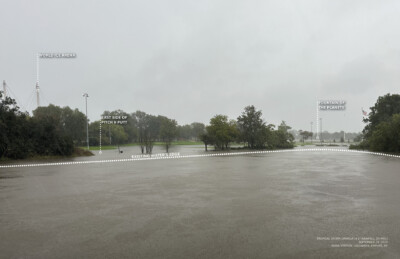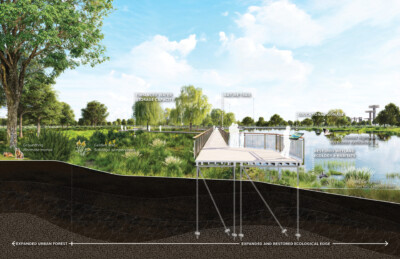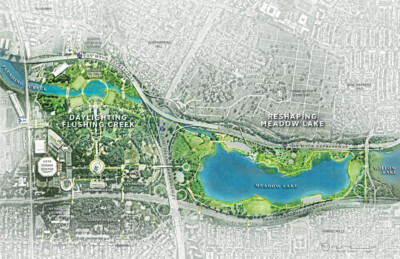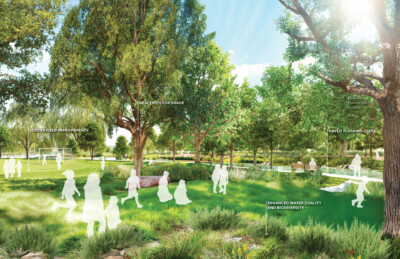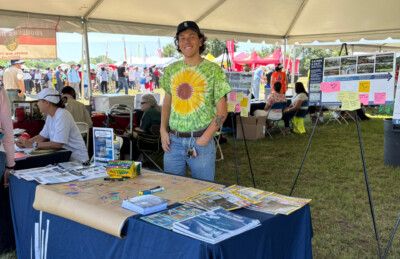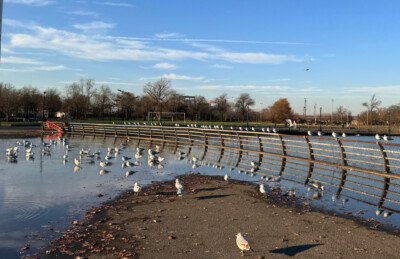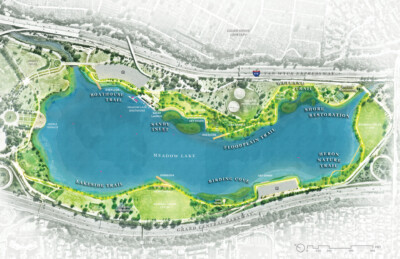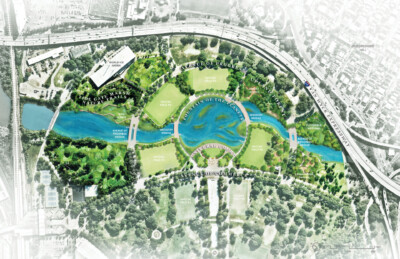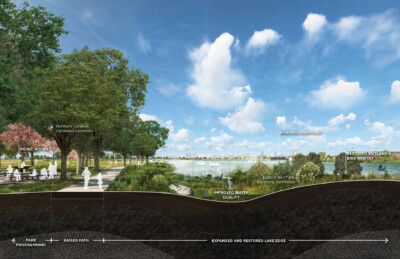Historically a marshland located in a low-lying area, Flushing Meadows Corona Park was was once a thriving wetlands and free flowing creek that filtered and absorbed stormwater. Filled with ashes and debris and then developed for the World’s Fairs in the ’30s and ‘60s, the marshes were obliterated and creek was buried. Today, the park is one of the largest public open spaces in New York City that connects some of the city’s most diverse neighborhoods to open space. Yet climate change puts the park at increased risk from flooding and increasing temperatures. The Flushing Meadows Corona Park Resiliency Study reimagines the park as both a cherished recreational destination and a vital piece of climate resiliency infrastructure— capable of safely managing water while serving the diverse communities that cherish it.
SCAPE worked with the Waterfront Alliance and AKRF to propose two new visions to address flooding in Flushing Meadows Corona Park: daylighting Flushing Creek in the park’s historic core and reshaping the edges of Meadow Lake. These approaches address flooding in the park by allowing the creek and lake to hold more water (increasing storage capacity), improve the flow of water through the park by eliminating the underground pipes in Flushing Creek, and improve water quality by adding wetlands that can filter out pollutants. As a result, the park can create or restore new habitats, lift recreational areas out of the floodplain for more reliable use, introduce new community-supported recreation opportunities, and provide much needed cooling through the introduction of new green and wooded spaces.
Client
- Waterfront Alliance
- New York City Department of Parks & Recreation
Collaborators
AKRF
